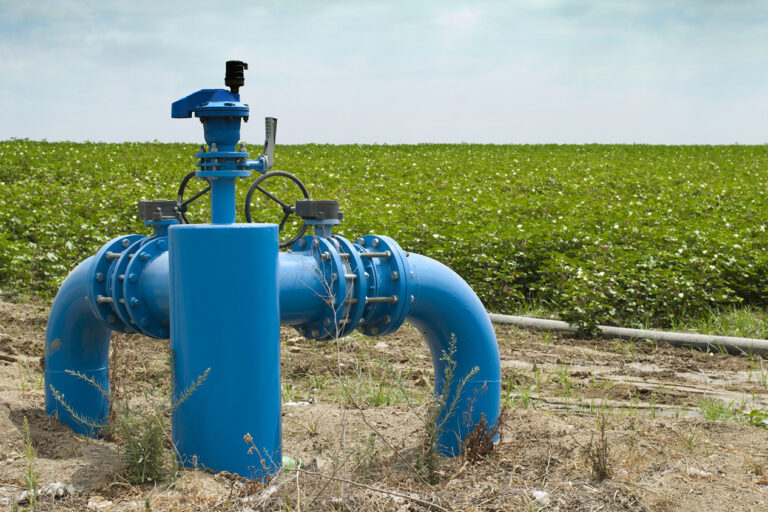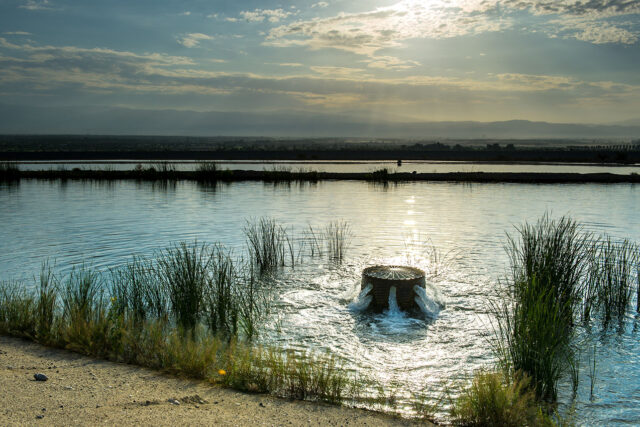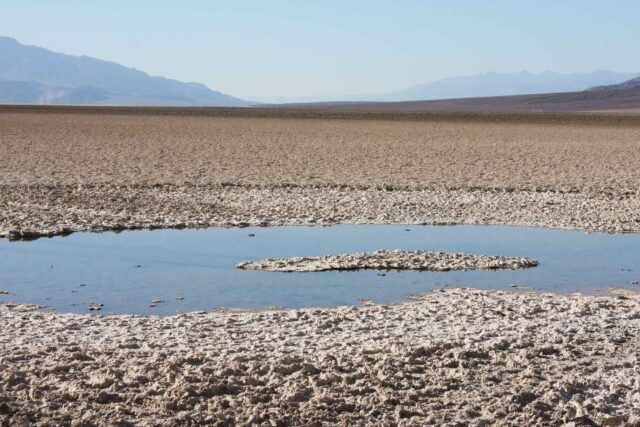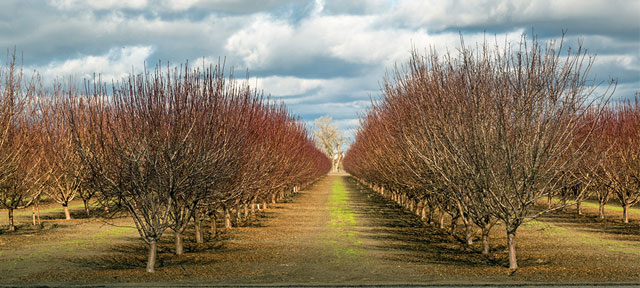- Groundwater is a vital component of California’s water supply.
On average, underground aquifers provide nearly 40% of the water used by California’s farms and cities, and significantly more in dry years. About 85% of Californians depend on groundwater for some portion of their water supply. Some communities rely entirely on groundwater for drinking water, and it is a critical resource for many farmers in the Central Valley and Central Coast. - Many groundwater basins are being used unsustainably.
In some basins, groundwater withdrawal exceeds the amount that is replenished over the long term. This is known as “overdraft,” and its repercussions can include higher energy use to pump water from deeper wells, sinking lands (which can damage vital infrastructure such as canals, levees, and roads), reduced streamflow, and reduced water quality (especially in coastal aquifers, which draw in seawater when depleted). Groundwater overdraft in some agricultural regions averages about 2 million acre-feet annually. During the latest drought, the pace of well drilling increased as farmers and communities sought new sources of water. As water tables dropped, more than 3,500 domestic wells went dry.
Groundwater pumping is depleting reserves in the Central Valley
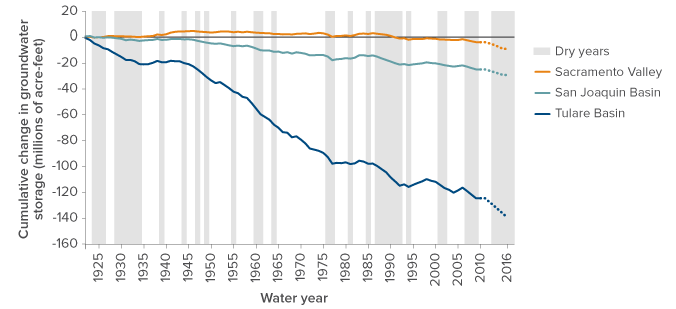
SOURCE: Updated from Ellen Hanak et al., What If California’s Drought Continues? (PPIC, 2015), Figure 3, using data through 2009 from the California Department of Water Resources and author estimates thereafter.
NOTES: Lines show cumulative change in groundwater storage based on water years (October–September). Projections since 2009 may underestimate depletions since the onset of the latest drought in 2012. Dry years are those classified as critical or dry in the Sacramento Valley based on the California Cooperative Snow Survey.
- Oversight of groundwater use has been minimal.
In contrast to surface water, groundwater use has largely been unregulated under California law until recently. Many basins have experienced long-term overdraft, and 21 of the state’s 515 basins are now considered “critically overdrafted.” Declining groundwater levels also cause problems for users of surface water when these sources are interconnected. Groundwater basins are replenished by rainfall, streamflow, and irrigation water. As pumping causes groundwater levels to drop, basins can draw in water from adjacent rivers and streams, reducing river flows and harming habitat. - Groundwater contamination is a growing water quality problem.
In many rural areas, nitrate—produced by nitrogen fertilizer and manure—is polluting local drinking water supplies. In some urban areas, basins are contaminated by industrial chemicals. Salt accumulation in inland basins and salt water intrusion in some coastal groundwater basins can damage crops and contaminate drinking water supplies. Treatment to remove contaminants from drinking water is costly, especially for small rural systems. Efforts are under way to find near-term solutions for poor rural communities with unsafe drinking water and to reduce future contamination of the state’s aquifers by controlling industrial discharges and changing farming practices. - Tools are available for better groundwater management.
California’s groundwater basins can store large volumes of additional water—at least three times more than the state’s existing dams. There is ample room for replenishment in overdrafted basins. Groundwater basins can be “recharged” by spreading water on fields to percolate through the soil and injecting water into wells. This practice can also improve water quality. Some urban areas—including much of Southern California and Silicon Valley—have created local authorities that regulate pumping and charge fees to fund recharge programs. Some farming regions are working on programs to provide incentives for recharge on farms. - Promising reforms are underway, but results will take time.
The state’s 2014 Sustainable Groundwater Management Act gives local agencies the tools and authority they need to develop and implement plans that will bring their basins into balance. The most stressed basins have until 2020 to adopt plans to achieve groundwater sustainability over a 20-year period. The State Water Board can intervene if local efforts are inadequate or if local authorities request assistance. Achieving this goal will protect the state’s groundwater reserves for the long term and enable its residents and economy to better weather future droughts. But attaining balance will require difficult decisions, because in some regions water use and irrigated acreage may need to decline to close the groundwater deficit.
Most groundwater use will be governed by sustainability plans under the groundwater law
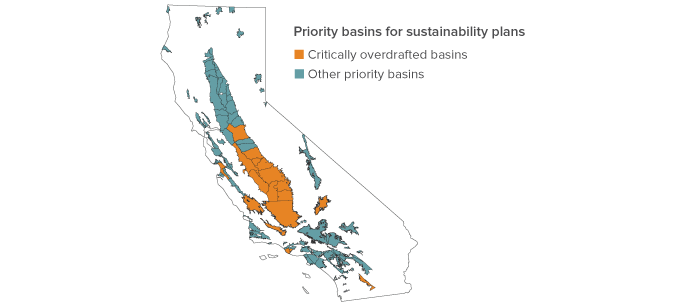
NOTES: Under the Sustainable Groundwater Management Act, groundwater users in critically overdrafted basins must adopt sustainability plans by 2020 and attain sustainable management within 20 years; other priority basins must adopt plans by 2022. In all, 127 basins, accounting for 96 percent of annual groundwater pumping, are considered priority basins that must comply within this time frame.
Topics
Drought Safe Drinking Water Water Supply Water, Land & Air

